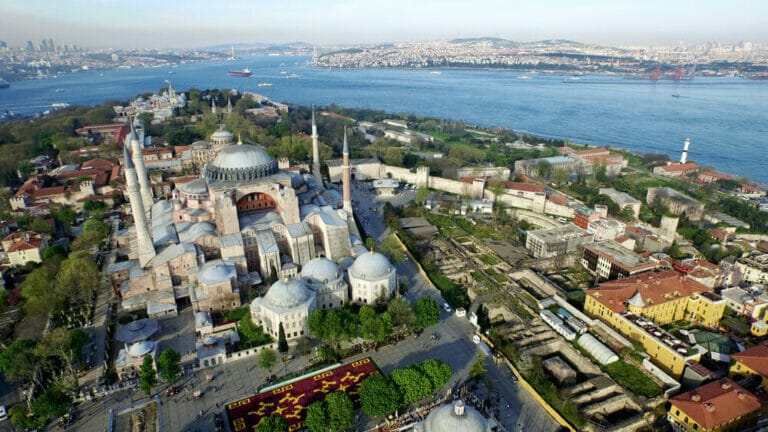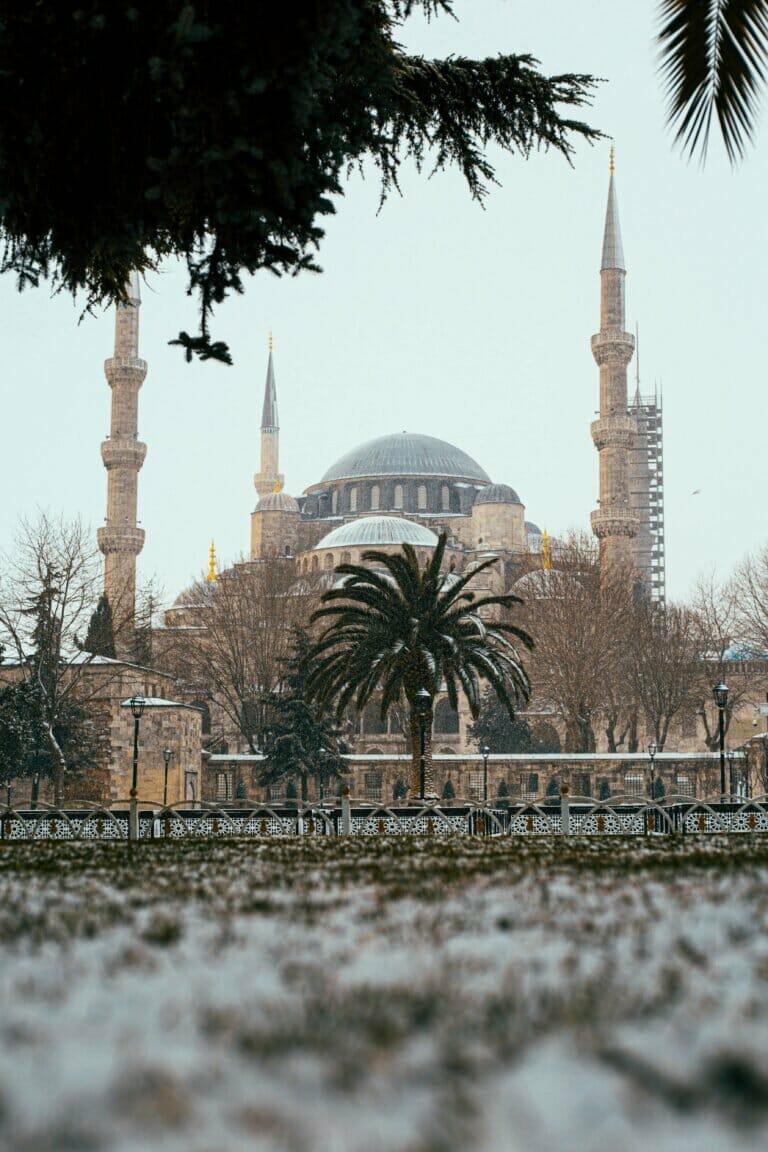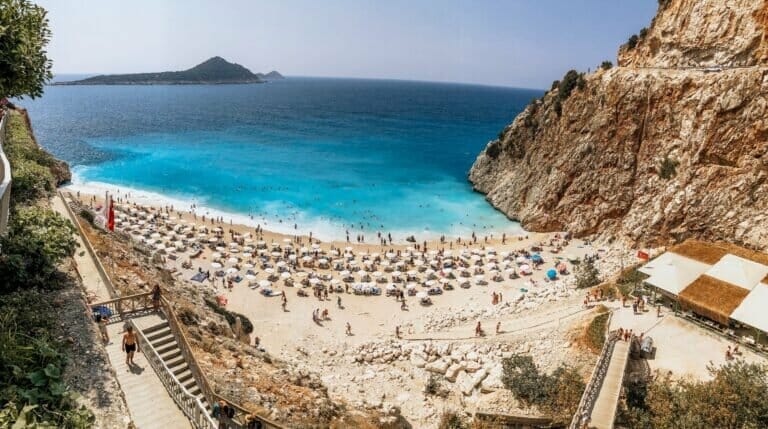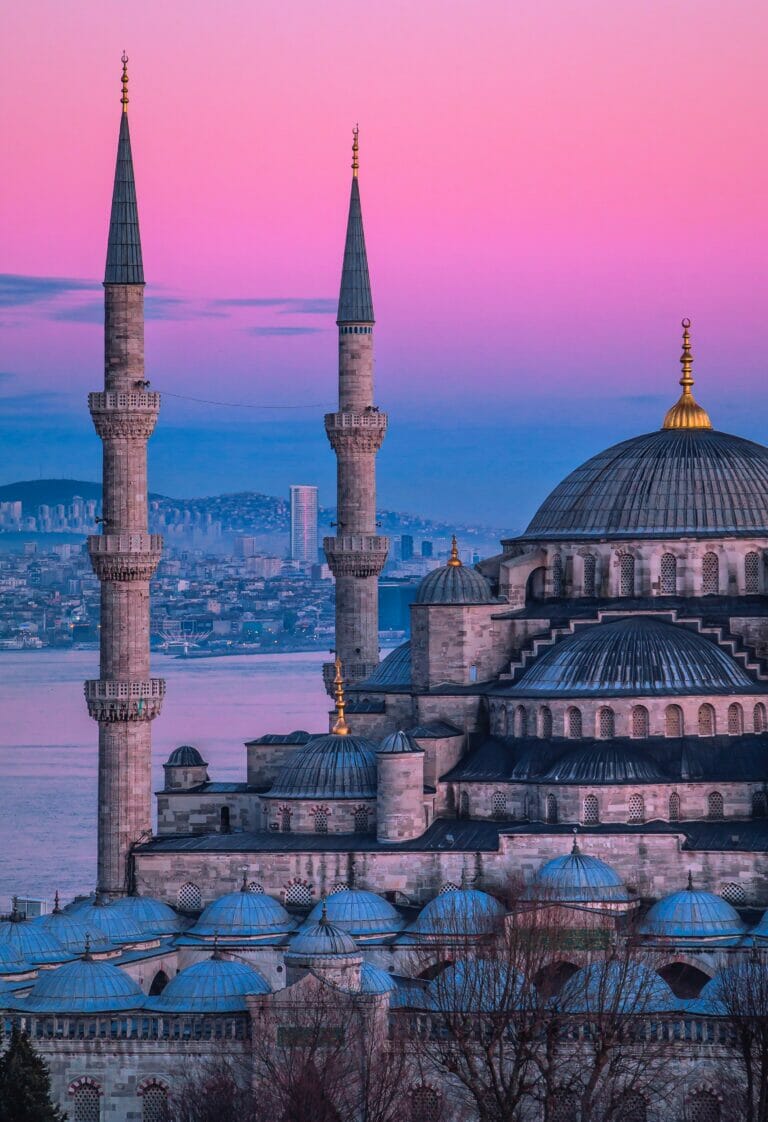Things to Do in Cappadocia
One thing which I always get excited about when I am thinking of Turkey is Cappadocia and in this post I am going to cover Top Things to do in Cappadocia on your next trip.
Cappadocia, a region of swirling volcanic-rock landscapes that resemble the work of mischievous elves, is a must-see destination for tourists travelling to Turkey. In actuality, though, the granite is being gently whittled away by wind and water.
Since at least the Bronze Age, people have lived here, leaving their own imprint on this bizarre moonscape by tunnelling through the soft volcanic rock to survive.
The Cappadocian villages, carved out of the hillsides, the Byzantine-era rock-cut churches with brilliant paintings, and the maze-like underground cities where early Christians once fled from attackers are the main tourist attractions.
Cappadocia’s valleys are one of Turkey’s top hiking and horseback riding attractions, and aerial photographs of the area’s sinewy outlines have made it one of the best spots in the world to take a hot-air balloon tour. The area is brimming with activities for both nature enthusiasts and history fans.
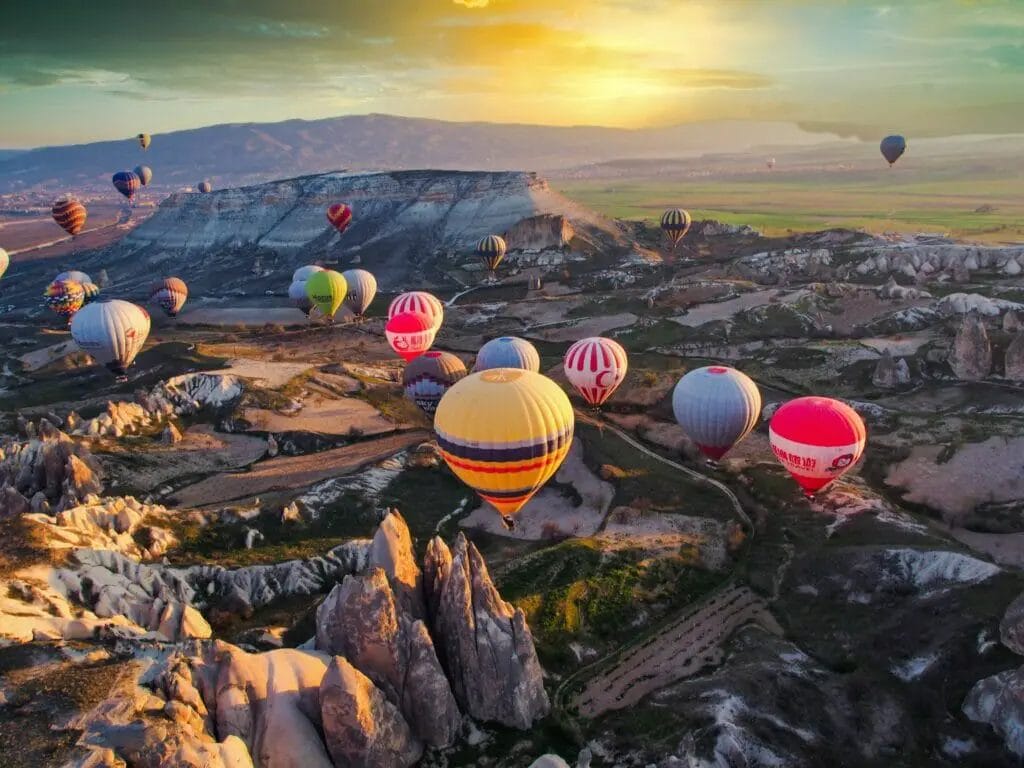
Best Things to do in Cappadocia
1. Soar over the Valleys in a Hot Air Balloon
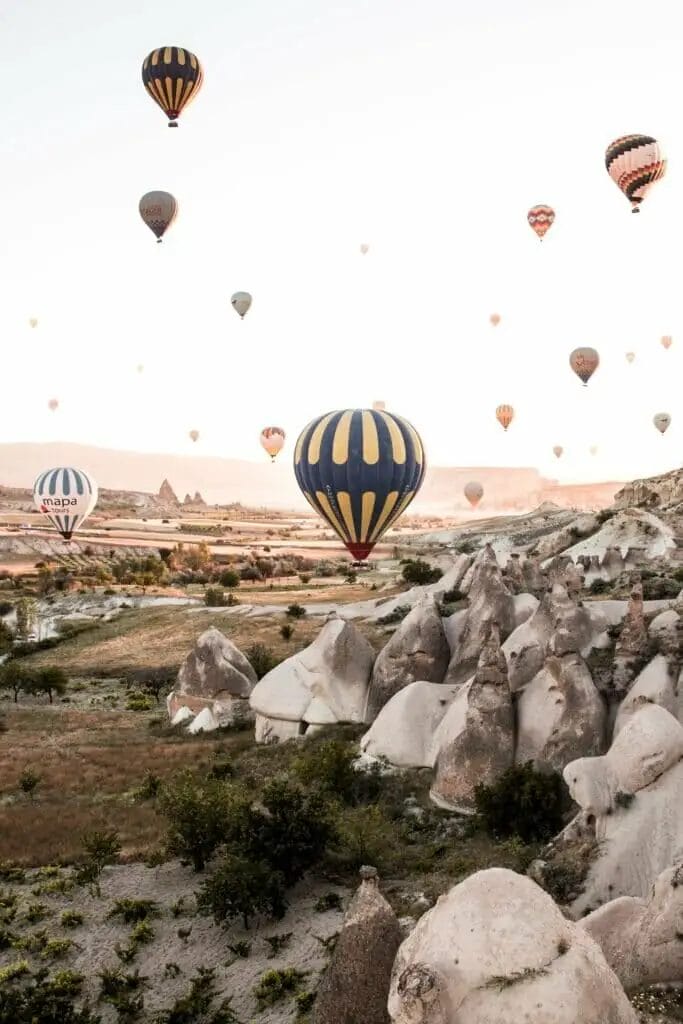
More than 100 hot-air balloons ascend to the skies shortly after sunrise during the peak summer months to provide passengers a bird’s-eye view of the central valley region and its rock formations.
Unless they are postponed due to bad weather, balloons soar daily all year round. Though occasionally the wind conditions force you to fly over other nearby places, the average flight path flies through the region encompassing the Red, Rose, and Meskendir Valleys.
Rides in hot air balloons last around an hour (with deluxe packages lasting around 90 minutes). Every tour includes hotel pickup and drop-off, as well as breakfast buffets in most cases.
2. Visit the Churches of Göreme Open-Air Museum
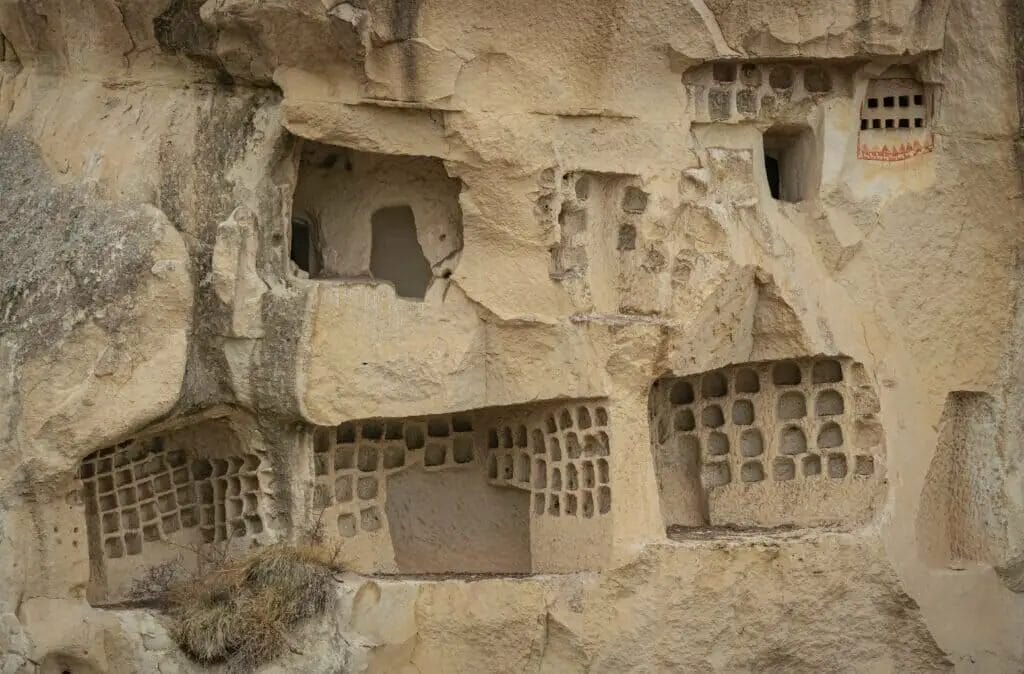
The UNESCO World Heritage site of Göreme Open-Air Museum, a monastic complex of rock-cut churches and monk cells that hold magnificent murals, is located just outside the municipality of Göreme.
The intricate frescoes were created between the 10th and 12th centuries, a time when Cappadocia was a significant Byzantine religious hub.
The complex contains a number of churches and chapels, but the most significant are the Elmal (Apple) Church, which has an Ascension fresco above the door, the Azize Barbara (St. Barbara) Chapel, which is decorated inside with red ochre, the Ylanl (Snake) Church, which has wall paintings of St. George and an intriguing fresco of the hermetic hermaphrodite St. Onuphrius, and the vast Tokal (Buckle)
The Karanlak (Dark) Church, which houses beautifully restored, vibrant frescoes that are among the best surviving examples of mid-Byzantine art in the world, is the complex’s focal point.
3. Hike or Horse Ride in Red and Rose Valleys
The intertwining valleys of Cappadocia between the towns of Göreme and avusin are among its most stunning sights.
The colourful pink, yellow, and orange cliffs that reach out across the landscape here were created by a volcanic outburst and centuries of wind and water erosion.
Rich orchards and vegetable gardens between the cliffs are still cared for by local farmers, while Byzantine-era hermitages and secret churches have been carved into the rock.
There are numerous activities in Cappadocia that might help you enjoy the best views of the valleys, but hot-air ballooning over the valleys draws all the attention. There are numerous hiking trails, so now is the ideal time to put on your walking shoes and go to the paths. A hike can last anywhere from a few hours to all day.
The Kolonlu (Column) Church, where columns were hewn out of the rock, the Haçl (Cross) Church, with its massive cross carved into the cave ceiling, and the Üç Haçl (Three Cross) Church, with its well-preserved ceiling carvings and intriguing (though severely damaged) frescoes, are three particular cave churches to seek out within Rose Valley.
Another highly popular activity in this valley area is horseback riding. Due to the rugged terrain, the majority of rides are better suited for intermediate cyclists than for novices.
4. Explore the Village of Göreme
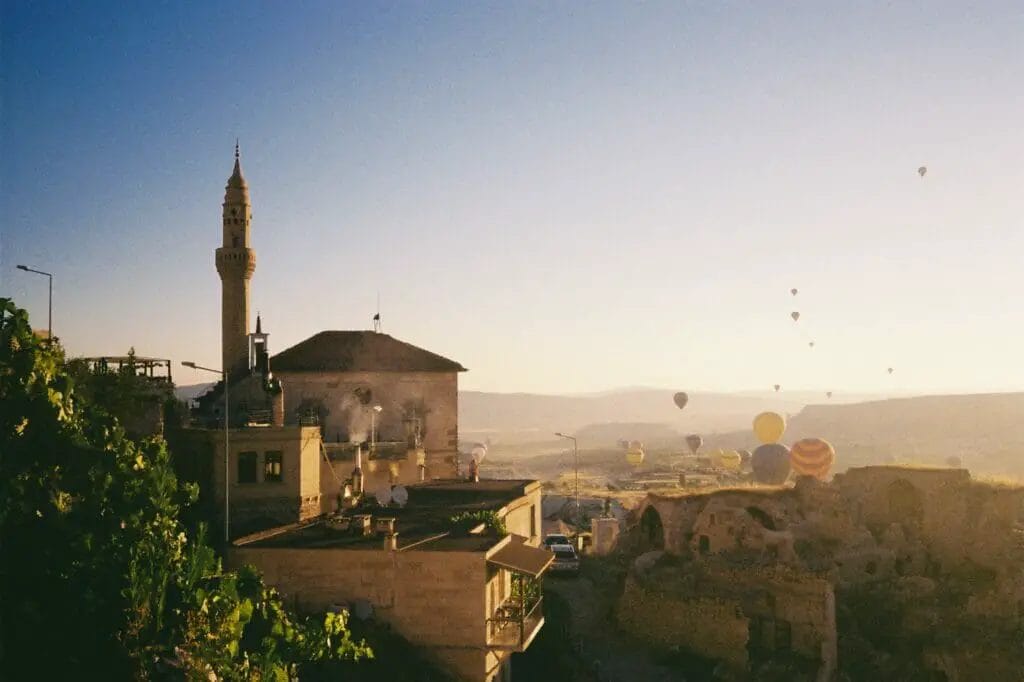
For good reason, Göreme has consistently been named one of the most stunning villages in the world by travel publications.
With its stone house facades concealing a labyrinth of cave rooms below, the settlement is partially submerged into the slope. Many of these historic homes in Göreme, the hub of Cappadocia’s tourism economy, have been converted into upscale cave hotels.
Both the Sakl (Hidden) Church and the fresco-adorned El Nazar (Evil Eye) Church are accessible from Müze Caddesi, a little distance from the centre on the way to Göreme Open-Air Museum.
The settlement serves as the main starting point for hikers eager to get outside because all the major valleys branching out from it provide a variety of paths that go through bizarre rock formations known as fairy chimneys in the area and up to panoramic vistas.
5. Head Underground at Kaymaklı and Derinkuyu
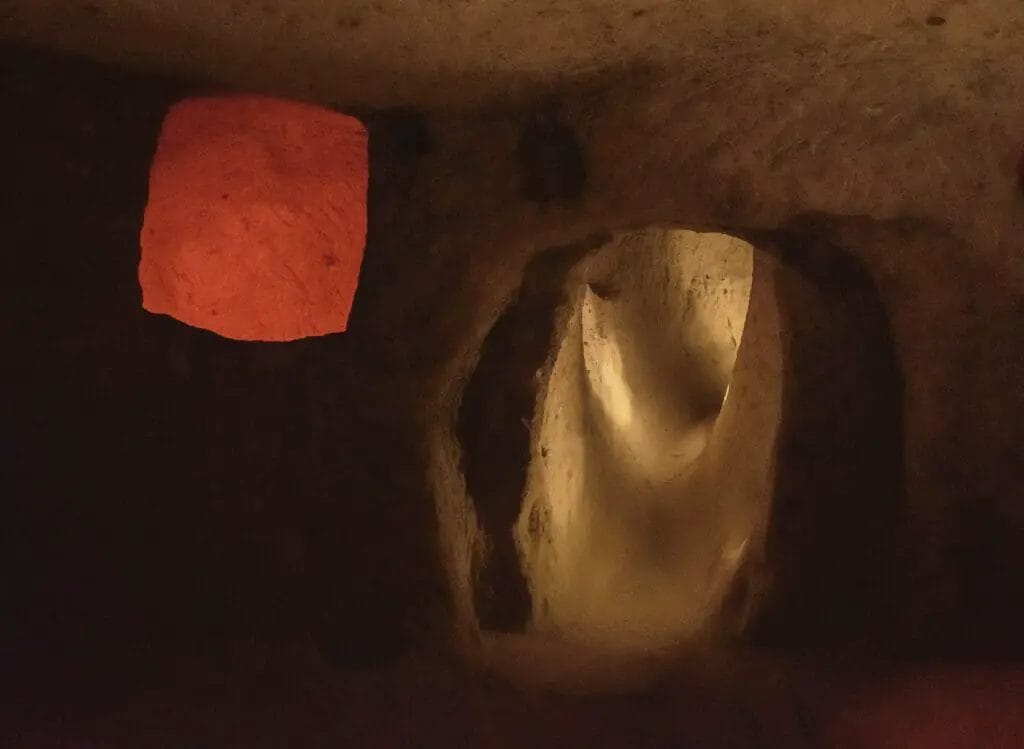
The first underground settlements in Cappadocia were chiselled out of the earth during the Bronze Age Hittite period, but it was during the early Byzantine period (the sixth and seventh centuries) that the region’s Christians turned to underground living to protect themselves from Arab and Persian invaders.
The largest example in Cappadocia is Kaymakl Underground City, which features an eight-level maze of rooms connected by tubes. Visitors are welcome to explore four of these levels.
The deepest underground refuge in Cappadocia is the Derinkuyu Underground City. As they descend further and further into the earth, these tunnels can get rather cramped. In this underground labyrinth, there is a vast chapel area as well as other residential and storage spaces to discover. Also visible is Derinkuyu’s inhabitants’ inventive ventilation shaft system.
The Derinkuyu and Kaymakl Underground Cities are close enough to one other for a day excursion, but if you only have time for one, Kaymakl is the less visited and has fewer huge tourist coach loads, making it more probable that you won’t have to contend with crowds as you explore the tunnels there.
6. Visit Zelve Open-Air Museum
Walking through Zelve Open-Air Museum is an experience of Cappadocia in the past with its knobbly-topped granite cliffs scattered with cave houses.
By the 20th century, the community—which had its beginnings as a monastery in the ninth century—was a thriving village.
The village had to be abandoned in 1952 because of the risks of erosion and rockfall. The valley as a whole is now a museum.
7. Hike Ihlara Valley
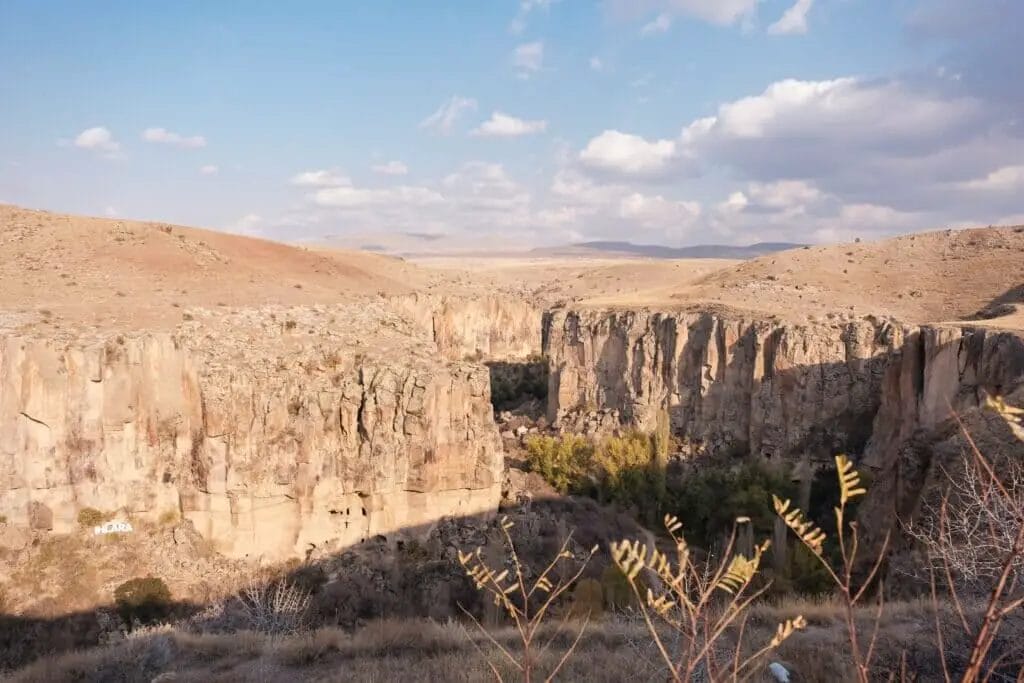
A nature lover’s paradise, this deep (100 metres) gorge in southwest Cappadocia is surrounded by a small, lush valley.
Ihlara Valley, which stretches 14 kilometres from Selime village to Ihlara village, is a beautiful Eden of tall poplar trees and fertile farmland plots encircled by rocky, steep cliffs.
This was a popular retreat for hermetic monk groups during the Byzantine era, who constructed churches and monastery complexes into the cliff face.
There are several churches to view along the journey, but three of the best are the Kokar (Fragrant), Ylanl (Snake), and Krk Dam Alt (also known as St. George Church).
The spectacular beginning or conclusion of an Ihlara Valley climb may be found at the rugged rock pinnacle of Selime Monastery in Selime town, which is carved with cave cells and churches.
8. View the Churches at Çavusin

Two magnificent Byzantine churches are the main draws in the small village of avusin.
The avusin Church, also known as the Big Pigeon House Church since it was once a neighbourhood pigeon house in the early 20th century, lies just by the town’s entrance. It has a wonderful interior fresco.
The Church of Saint John the Baptist, one of the earliest in the region, can be found in the old town centre after ascending high above the jumble of abandoned homes.
The church’s basilica-like proportions and thick columns are a sight to behold, and its cave entrance offers panoramic views of the surrounding countryside.
9. Explore Soğanlı Open-Air Museum
Pyramid-shaped rock pinnacles that were first cut out during the Roman era are strewn throughout the twin valleys of Soanl.
By the time the Byzantine era was fully developed, Soanl had developed into a significant monastery complex, with chapels and monks’ quarters built into the rock pinnacles.
The three churches named Karabaş (Black Hat), Ylanl (Snake), and Sakl (Hidden) hold the chapel cluster’s best-preserved frescoes.
Soganli is a great destination for a day trip because the road that leads there is dotted with peaceful towns and fascinating ancient buildings.
The ancient ruins of Roman Sobesos and the Byzantine-era Keşlik Monastery are two of the ideal places to make a pit stop.
10. View the Fairy Chimneys of Paşabağı
One of Cappadocia’s most well-known sights is the Paşaba valley, which is home to hoodoos, often known as fairy chimneys.
A religious group dedicated their lives to their own stylite practises here during the early Byzantine era. They were followers of Saint Simeon Stylites, a 4th century monk who lived on top of a pillar in northern Syria.
However, they carved monk cells high up in the rock pinnacles to live a hermitic life of prayer instead of pillars. These monk cells still have one cell that may be seen.
11. Climb Uçhisar’s Rock Citadel
A massive fortification carved out of rock that is covered in tunnels and caves towers over the settlement of Uçhisar.
This rocky protrusion protected the locals from invaders during the Roman and Byzantine centuries, just as the region’s underground cities.
You may climb the stronghold to the top, where you’ll be rewarded with expansive views across the sweeping valleys that round the settlement.
Numerous boutique cave hotels are located in Uçhisar, which is also a well-liked tourist destination.
12. Shop for Local Ceramics in Avanos
Avanos is a thriving rural community next to the Kizilirmak River. The main draw of Avanos is its pottery, despite the fact that the older section of the town winds up the hillside in a labyrinth of cobblestone streets surrounded by abandoned Ottoman houses.
The history of pottery making in this town dates back to the Hittite era, and much as then, local potters still use the characteristic red clay from the Kizilirmak River today.
Many of the proprietors of the pottery studios and stores along the main road in the town’s centre, next to the river, are willing to let you watch them at work or try your hand at making a basic pot yourself.
The Guray Ceramic Museum in the city showcases an astounding collection of ceramics from all across Turkey to honour this pottery history.

